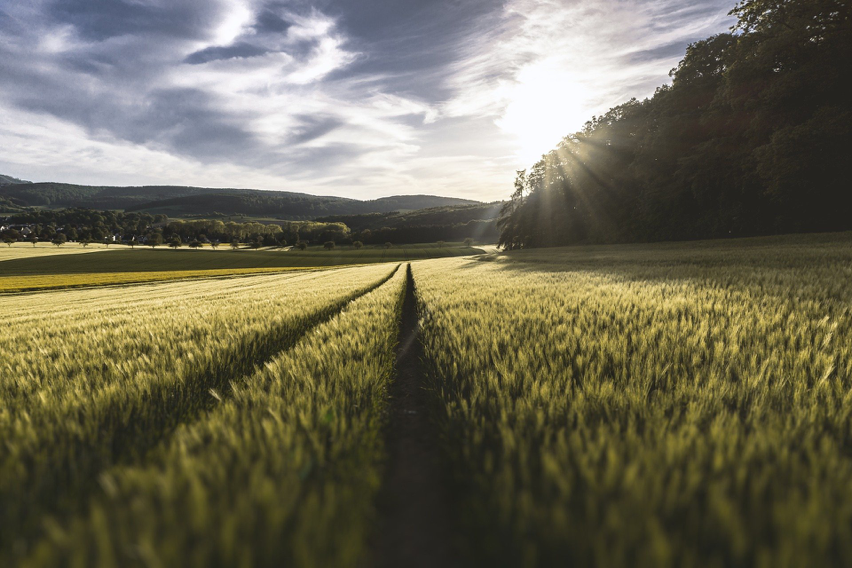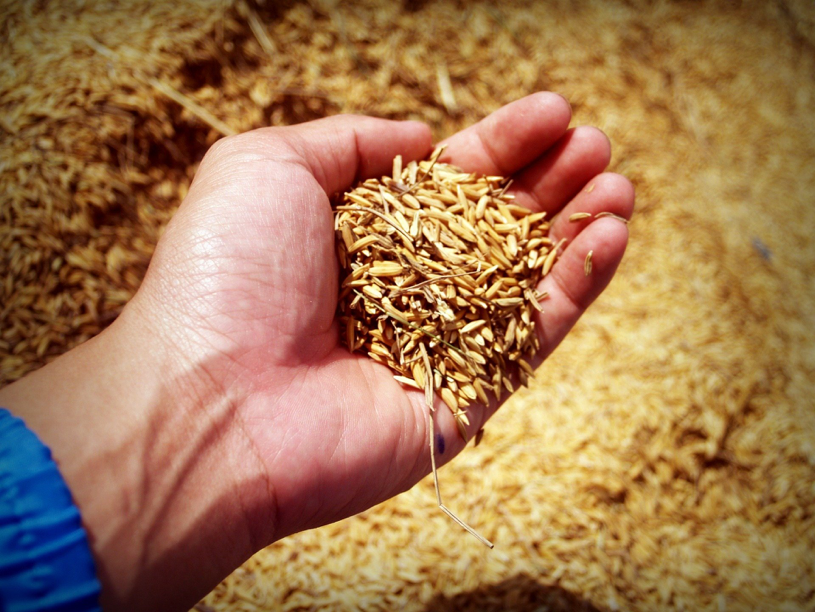By Megan Widdows
Vegetables and crops such as wheat and rice are some of the most important plants in our food production. But have they always had the same characteristics that they have today?
Not at all. In fact, the ancestors of the crops we farm today were very different and over time they have changed to be more suitable for farming and human consumption. One of the defining characteristics of crops becoming domesticated, in the Neolithic period and beyond, was the loss of natural seed dispersal methods as plants became reliant on farmers to sow the seeds each year. Another change that occurred around this time was seed enlargement.

But how did these changes occur? Changes to a species over time are possible due to natural selection, or survival of the fittest, where the organisms with the most desirable characteristics are more likely to survive and reproduce, passing their genes on to their offspring. Natural selection occurs due to variation within populations of the same species.
One way of producing genetic variation is through mutations in our DNA. Mutations are changes to the DNA sequence that makes up our genes. They occur spontaneously during the DNA replication process. Most of the time mutations don’t change any of the characteristics of an organism, but sometimes a mutation will be what we call deleterious. This means it will have a negative effect on the organism and will reduce the chance of an organism surviving and passing on its genes to the next generation.
Alternatively, sometimes a mutation creates a positive change in an organism, for example making it larger or stronger. This makes an organism more likely to survive and pass on its genes, passing this new mutation onto the next generation.
Natural selection is happening all the time in nature, and it is one of the main drivers of evolution and adaptation. However, it is not the only evolutionary tool for creating change within a population. Ever since the origins of farming, humans have been speeding up the process of natural selection by choosing animals and crops with the most desirable characteristics to breed. This ensures that future generations have the genes that encode the most desirable characteristics, helping to improve yield or provide another advantage to farmers. This process is known as artificial selection.
Another cause of genetic changes in a population is a process called unconscious selection. In contrast to artificial selection, where farmers knowingly select for desired characteristics, unconscious selection occurs when farmers unknowingly select for a characteristic that they do not care about. This can happen when the characteristic is genetically linked to a desirable characteristic which is being actively selecting for. When organisms with the desirable characteristic are bred, their offspring inherit both the selected characteristic and any other characteristics that are genetically linked to it. For years, scientists have wondered how the vegetables and crops we eat today have evolved. In 2017, a group of scientists at the University of Sheffield set out to discover the evolutionary causes of seed enlargement, one of the key features of crop domestication. The seeds of domestic cereal crops that we eat today, like wheat, rice, and maize, have much larger seeds than their wild relatives.

One hypothesis was that the larger seed size of domestic crops could be a result of artificial selection, whereby the farmers identified large size as a desirable trait in crop seeds and took steps to enhance and increase this trait in future generations. Early farmers may have believed that larger seeds would bring higher crop yields, or they may have found larger seeds easier to handle and sow, so chose these over smaller seeds.
Alternatively, larger seeds could have arisen as a result of unconscious selection, if the genes responsible for seed size were linked to another characteristic such as crop height. If this were the case, when farmers selected for taller crops, they would have also unknowingly selected for larger seeds.
Another theory was that the increase in seed size came about through natural selection, as a consequence of the changes that happened when humans brought about crop domestication. It is possible that larger seeds may have increased the chance of the plant surviving or reproducing.
To test whether early farmers may have unknowingly selected for large seed size when breeding plants, the scientists studied seed size in domesticated vegetables and their wild relatives. Vegetables were chosen because any deliberate selection for desired characteristics in these plants would have focused on increasing the size of their leaves, roots or stems, since these are the parts that are eaten, rather than the seeds. If there has been an increase in seed size in domesticated vegetables, it is likely to be the result of unconscious or natural selection.

The scientists found that, just like cereal crops, domesticated vegetables have larger seeds than their wild relatives – suggesting that artificial selection is unlikely to explain large seed size in domestic crops.
This discovery is important because it shows us how significant changes to our staple crops and vegetables were brought about by our early farmer ancestors without their deliberate intention. Within studies of evolution, it also highlights the importance of the often overlooked process of unconscious selection.
The study mentioned in this article can be found here. A glossary of key terms is provided below.
Tell us what you think about this blog…
We are trying to understand who reads our blogs and why, to help us improve their content.
By completing this survey, you agree that you are over the age of 18 and that your responses can be used in research at the University of Sheffield to evaluate the effect of blogging in science communication.
Glossary:
Artificial selection – taking steps to enhance and perpetuate traits that have been identified as desirable by humans in future generations of plants and animals
Deleterious – something that causes harm or a negative change, usually has a negative effect on the organism and will reduce the chance of the organism surviving and passing on its genes to the next generation.
Evolution – the gradual process by which living organisms have changed and adapted from earlier forms
Mutations – changes to the structure or make up of a gene that can result in changes to an organism and/or its offspring
Natural selection – the process whereby organisms that are better adapted to their environment tend to survive and produce more offspring
Unconscious selection – non-intentional human selection that can occur when a characteristic is genetically linked to another characteristic. If one of these characteristics is artificially selected, the other will also be unintentionally selected.
Variation – any differences between cells, organisms or groups of organisms caused by genetic differences or environmental factors.
